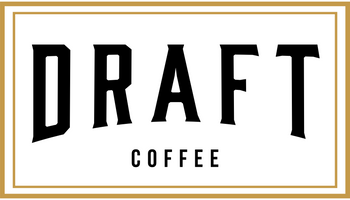Peru Oswaldo Gonzalez | Finca El Cedro
COUNTRY: Peru
REGION: Huabal, Cajamarca
VARIETY: Bourbon, Caturra
ALTITUDE: 1850 masl
PROCESS: Washed
TASTING NOTES: Fresh pear with mellow cola, cooked red grape, and brown sugar flavours. Juicy acidity and syrupy sweetness.
Oswaldo Gonzalez
Finca El Cedro, managed by Oswaldo González, is situated in the Huabal district of the Cajamarca region in Peru. This area is renowned for its high altitudes and favourable microclimates, ideal for producing specialty coffee.
The farm is located at an elevation of approximately 1,850 meters above sea level, providing optimal conditions for cultivating high-quality coffee varieties. Oswaldo focuses on growing Caturra and Bourbon varieties, known for their exceptional cup profiles.
During the harvest season, meticulous handpicking ensures that only the ripest cherries are selected. These standards established with pickers enhances the coffee's clean and vibrant flavor profile.
Oswaldo's dedication to quality and sustainable farming practices has positioned Finca El Cedro as a notable producer in the Huabal region. His commitment to excellence contributes to the area's reputation for producing exceptional specialty coffees that have made him a leader in his community.
Cajamarca
Cajamarca is a semi-dry, semi-cold, tropical highland of Peru with very fertile soil at high Andean mountain elevations. All of these factors contribute to the potential of specialty coffee production in the area, which is growing. Smallholder producers farm on 2-3 hectares of land, many of which practice organic farming. Most farmers in the area work independently, but the recent increase in cooperatives has been effective in increasing the quality of coffees produced in the area.
Peru
Though coffee arrived in Peru relatively early—in the middle of the 1700s—it wasn’t cultivated for commercial export until nearly the 20th century as demand from Europe rose due to a significant decrease in coffee production in Indonesia. British presence and influence in the country helped increase and drive exports. In the early 1900s, the British government took ownership of roughly 2 million hectares of land from the Peruvian government as payment on a defaulted loan, and much of that land became British-owned coffee plantations.
As in many Central and South American countries, the large European-owned landholdings were sold or redistributed throughout the 20th century. Farms became smaller and more fragmented, offering independence to farmers but also limiting their access to resources and a larger commercial market. Unlike many other countries whose coffee economy is dominated by smallholders, Peru lacks the organization or infrastructure to provide economic or technical support to farmers—a hole that outside organizations and certifications have sought to fill. The country has a remarkable number of certified-organic coffees, as well as Fair Trade, Rainforest Alliance, and UTZ-certified coffees. Around 30 percent of the country’s smallholders are members of democratic co-ops, which has increased the visibility of coffees from the area but has done little to bring incredibly high-quality lots into the spotlight.
As of the 2010s, Peru is one of the top producers of Arabica coffee, often ranked fifth in world production and export of Arabica. The remoteness of the coffee farms and the incredibly small size of the average farm have prevented much of the single-farm differentiation that has allowed for microlot development and marketing in other growing regions, but as with everything else in specialty coffee, this is changing quickly as well. The country’s lush highlands and good heirloom varieties offer the potential for growers to beat the obstacles of limited infrastructure and market access, and as production increases, we are more likely to see those types of advancements.












